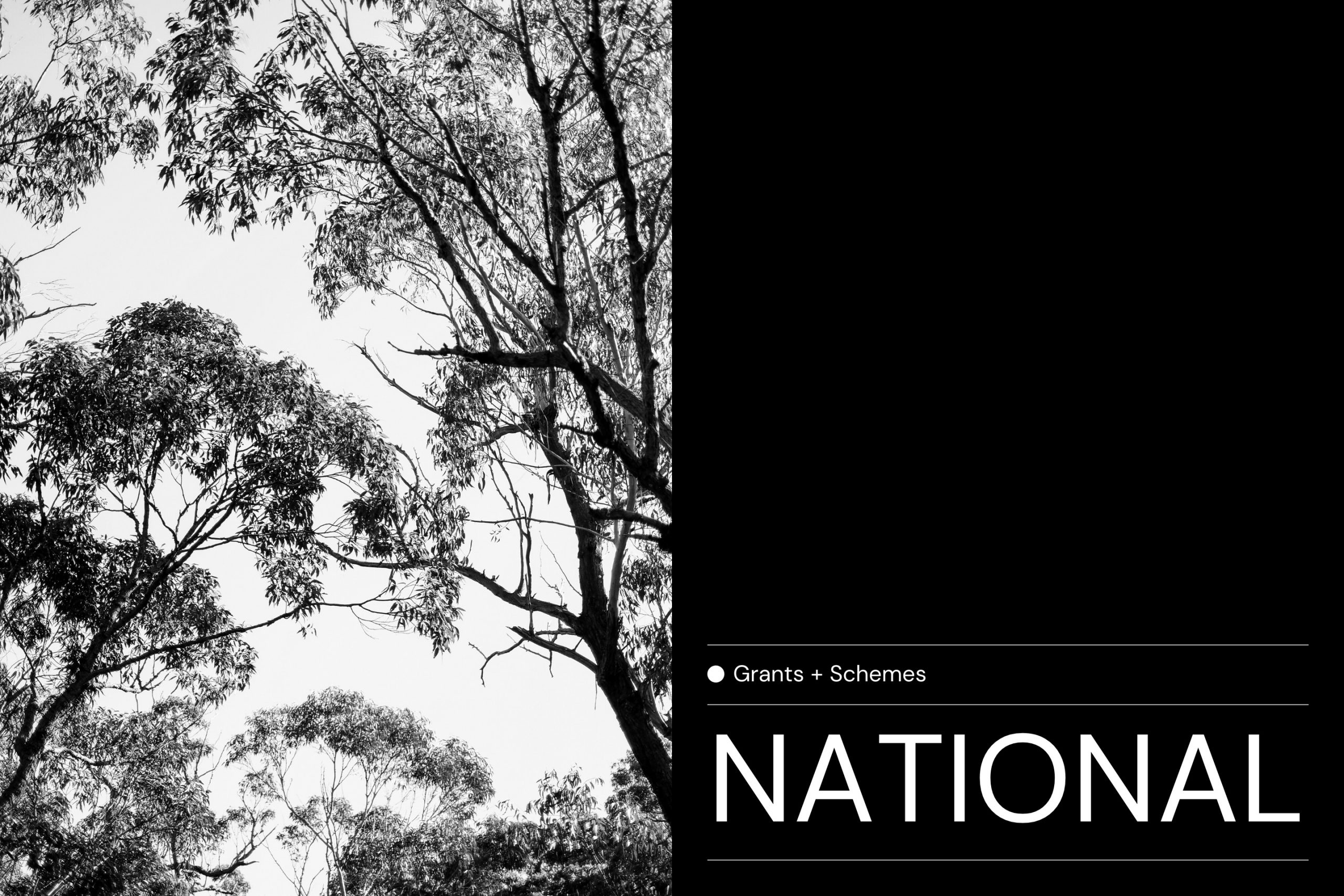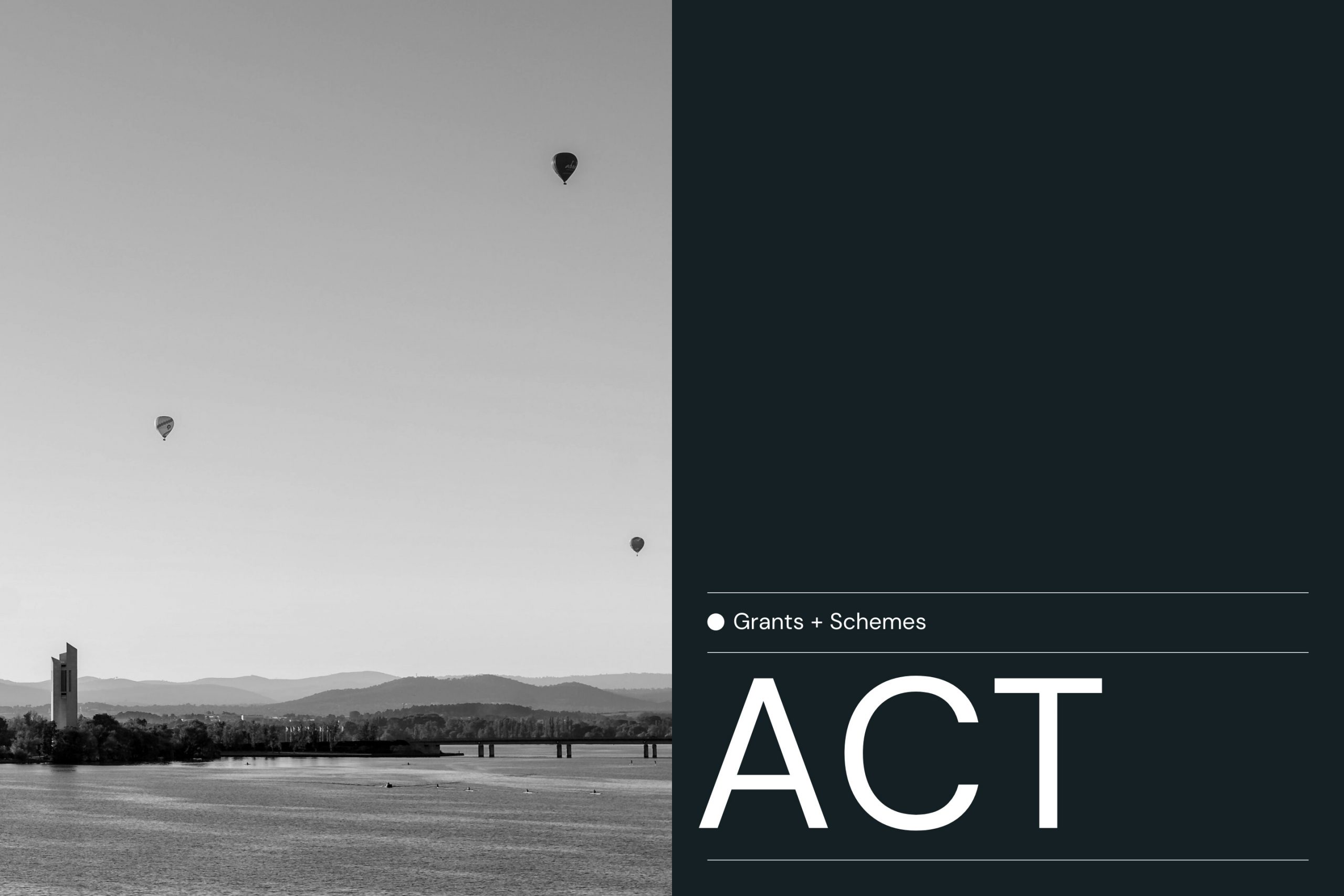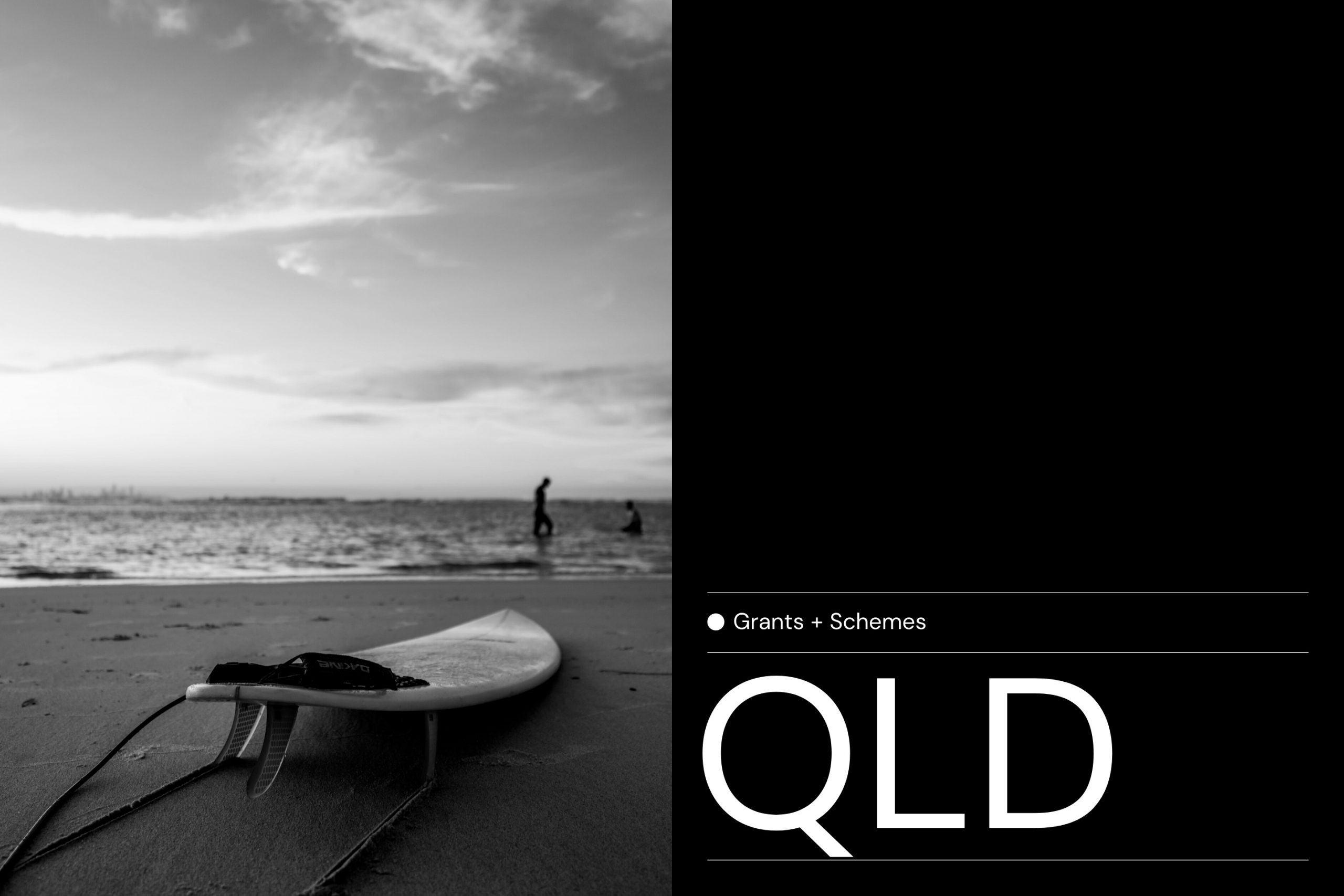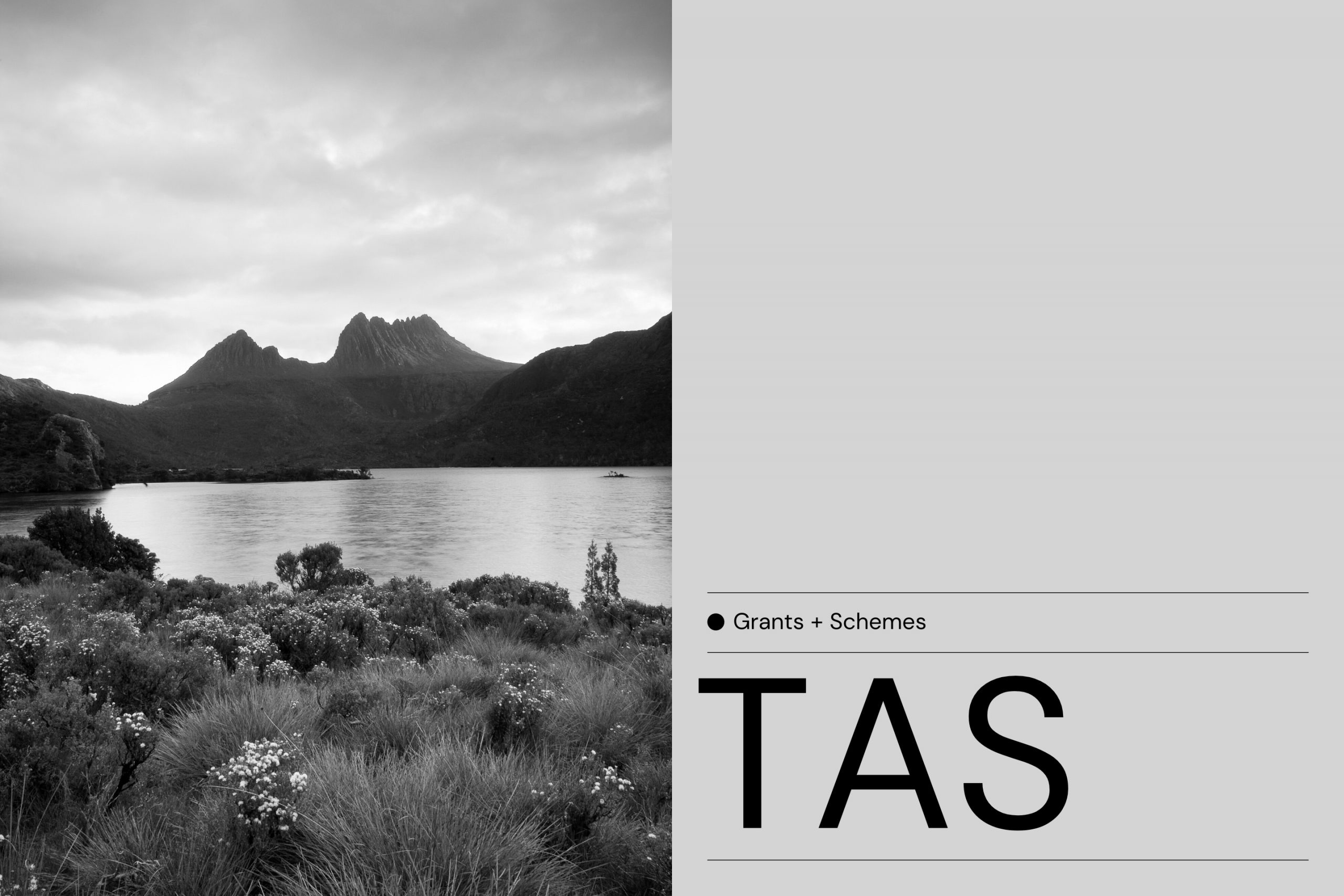Hey there first home buyer! Whether you’re looking to buy, build or something in between, discover the grants and schemes that are available for you both nationally, and, in your state.
*Before we get into things, this post is a bit of a long one. So here are some quick links to help you find exactly what you’re looking for:
**This article was last updated on: 18/01/2023
We love helping people buy their first homes, and purchasing a home is still #goals for many of us, even during the pandemic. While property prices in Australia’s capital cities might have made homeownership seem unattainable, with the right plan and the right help in place, it might be possible to make the leap sooner than you think. At both a state and federal level, governments around Australia have introduced a range of financial assistance grants and schemes to assist eligible first-home buyers to get into their first home purchase, sooner.
Ok, let’s break them all down...

First Home Guarantee (FHBG)
*Replaces the First Home Loan Deposit Scheme (FHLDS)
One thing that stops many people from trying to get into the property market is that they are overwhelmed by the prospect of saving a big deposit. Without help from the bank of Mum and Dad, an inheritance, or an extremely well paying job, it can be almost impossible to save a lump sum big enough. And we know that those things are not necessarily within reach for the vast majority of Australians.
Enter: The First Home Guarantee or ‘FHBG’. This Scheme allows eligible first home buyers to purchase a property with just a 5% deposit, and without needing to take out Lenders Mortgage Insurance (LMI), which you normally would have to do with a deposit less than 20%. That’s because the National Housing Finance and Investment Corporation ‘guarantees’ up to 15% of the value of the property for you.
🚨 Jargon alert: A ‘guarantor’ is a financial term that describes someone who promises to pay your debt in the event that you default on, or are unable to pay, the loan. They have to pledge their own assets as ‘collateral’, which is a confusing way of saying that they have to show the bank that they can actually pay the debt by putting up other things they own. Learn more about guarantors here.
Before you count your chickens, there are a couple of things to consider before applying for the FHBG:
- Are you eligible? There are some hoops to jump through including an income test, prior property ownership test and deposit requirement test (5%). Use this online eligibility tool to see if you meet the basic criteria.
- Are you going to apply as a single or a couple (if you’re in a relationship). Why does it matter? Because once a place has been reserved in your name (either as a single or a couple), it can only be changed if you withdraw or start a new application.
- Have you got a Notice of Assessment from the Australian Tax Office ready to show your taxable income for the previous financial year? (If you’re applying during the 2020/21 financial year, you’ll need a 2019/20 Notice of Assessment, etc.)
- Is the house you want to buy eligible? (i.e. a new home) and is it over the maximum property purchase price? You can check the price cap in your area as well as find out more about what types of properties are accepted in the scheme.
- Places are limited with 35,000 spots available in the scheme From 1 July 2023 – 30 June 2024.
To apply for the First Home Guarantee, you can:
- Go directly through one of the 27 participating lenders, or
- Get the help of your favourite mortgage advisers (👋 )
Family Home Guarantee
As a part of the 2021 budget, the federal government announced a new scheme called the Family Home Guarantee to help support housing affordability and give assistance to single parents with dependants. The scheme allows the eligible parent to either build a new home, or purchase a new or existing home, and isn't limited to first home buyers. Under the scheme, a single parent will be able to purchase a property with a 2 per cent deposit, with the government guaranteeing another 18 per cent of the value of the loan. From 1 July 2021, the scheme has 10,000 placements and will be spread over four years, averaging 2,500 single parents a year and will be subject to property price caps. Find out more about the Family Home Guarantee here.
First Home Super Saver (FHSS) Scheme
Did you know that you can now make voluntary contributions into your super to help save for your first home? The First Home Super Saver (FHSS) Scheme was created a few years ago to allow eligible first home buyers to save for a deposit inside their superannuation. Basically, it involves sacrificing some of your pre-tax income and putting it into your super fund to lower the amount of tax you pay, and therefore freeing up more funds to put towards buying your first home. When the policy was announced, the Government stated that under the FHSS Scheme first home buyers would be able to “accelerate their savings by at least 30%”. But there are, of course, caps on how much you can contribute as part of the Scheme with limits of up to $15,000 a year (and now $50,000 altogether), and you can’t release any of the contributions made by your employer (as part of the Superannuation Guarantee) or a spouse, under the Scheme.
While it's a great idea, the ins and outs of this scheme mean it won't be for everyone. If you're unsure whether it's right for you, we'd love to be a sounding board. Drop us a line! info@nullpurefinance.com.au
NEW: Federal Labor's 'Help to Buy' Scheme
As an election promise, the Federal Labor government pledged to help low-to-middle income buyers by essentially ‘co-purchasing’ up to a maximum of 40% of a new home purchase and up to 30% of the purchase of an existing home. The policy was included in the October 2022 budget and there is $325 million set aside for the scheme. This scheme isn’t strictly available for first home buyers only; it’s designed to help anyone who is facing a retirement of renting.
To qualify, you’ll need to earn no more than $90,000 as an annual income for singles and $120,000 for couples. Labor’s policy will allow purchase values of up to $950,000 in Sydney and $850,000 in Melbourne, with lower caps for other states and outer regional areas. You’ll also need at least a 2% deposit, intend to live in the property and own no other property or land here or overseas. You must also be an Australian citizen and aged over 18.
You’ll still have to pay any stamp duty and any ongoing costs, such as strata, yourself. But you won’t have to pay rent to the government on their ownership stake. Like the First Home Guarantee schemes, the government will also go guarantor on your missing deposit (up to 18%), meaning you won’t have to pay Lenders Mortgage Insurance (LMI). Over time, you will have the option to buy out the government share, if you can afford it, in minimum increments of 5%.
Important note: if your income creeps over the income thresholds during your ownership, you’ll be required to start making some payments to the government to pay out their share. Details are not clear on this yet, but it’s worth remembering.
To give you some examples, on a $950,000 new build in Sydney, the government would cover up to $380,000 of your purchase (40%) and for an established home the saving would be up to $285,000. For a new build in Melbourne at $850,000, the savings would be up to $340,000 and $255,000 on an established home.
There will be 10,000 places available each financial year and, as there weren’t any concrete details in the October budget, our guess is that the first places for the scheme could open as early as July 2023.
Along with these nationwide schemes, each state and territory offers a range of specific grants that can help you get your foot in the property door. And the good news is, you can often take advantage of them in conjunction with the Federal schemes.

First-Home Owners Grant (New Homes)
Thinking about buying or building your first home? Take advantage of the NSW Government’s First-Home Owners Grant (New Homes). The scheme offers a $10,000 grant to first homeowners who choose to buy or build a new home, even if you have also applied for the federal schemes.
To qualify, you must purchase a new property that is $600,000 or less in value. Or, if you’re buying land to build a new home, the total price must not exceed $750,000 (for the land and the home). Check if you meet the eligibility requirements for the First-Home Owners Grant (New Homes) here.
First-Home Buyer Assistance Scheme (FHBAS)
You’ve likely heard of stamp duty, but in case it’s new to you - it’s essentially a state tax imposed on certain transactions, such as car registrations, mortgages and property transfers. Lots of things impact if, and how much, stamp duty you’ll need to pay, including the price of the property and how you’ll use it. It’s often one of those costs that first home buyers don’t account for and it can be a nasty surprise.
So, along with the First-Home Owners Grant, the NSW Government also offers stamp duty concessions for eligible first-time buyers across a range of properties (both new and existing). The First Home Buyer Assistance Scheme helps first home buyers save on stamp duty, with different savings thresholds depending on the type of property you’re buying, the cost of property and/or land, and when you’ve purchased the property and/or land.
The First Home Buyer Assistance Scheme is available to first-home buyers:
- Buying an existing home
- Buying a new home
- Buying vacant land with the goal to build a home
- Buying a home they will move into within 12 months of purchasing, and stay living there for a consecutive 12 months
Under the scheme, eligible first home buyers will pay no stamp duty on the purchase of new and existing homes valued up to $800,000 (with discounted stamp duty rates available for purchases valued between $800,000 and $1,000,000). Plus, if you’re thinking of purchasing vacant land up to $350,000, you won’t pay stamp duty (with discounted stamp duty rates available for land valued between $350,000 and $450,000).
To find out how much stamp duty you’ll pay, and the full list of eligibility requirements for the First Home Buyer Assistance Scheme, head here.
NEW: NSW Government's Shared Equity Scheme
The current NSW Government is also launching a new policy in which it will pay part of the purchase price of a property, in exchange for an equivalent ownership share of that property. Like the federal Help to Buy scheme, the NSW Government contribution is up to 40% of the purchase price of a new home and up to 30% of the purchase price of an existing home.
Similarly with the Help to Buy and Family Home Guarantee schemes, the purchaser must have a minimum deposit of 2% of the purchase price and will not incur any Lenders Mortgage Insurance (LMI) fee, with the government also going on as guarantor. The scheme is open to single parents of child/ren under 18 years old, a single person 50 years old and above and key workers who are nurses, teachers or police who are first home buyers.
To qualify, the income of the household must be no more than $93,200 for singles and $124,200 for couples per annum, be no younger than 18 years old, and an Australian or New Zealand citizen or permanent resident. You’ll have to front up a minimum deposit of 2% and occupy the property as your home, without owning any other land in Australia or overseas at the time of purchase.
The price caps include a max of $950,000 for properties in Sydney and major regional centres like Newcastle, Lake Macquarie, Illawarra, Central Coast, North Coast of NSW; or less than $600,000 in other regional areas. The best part is that if you’re a first home buyer, you remain eligible for all other first home buyer help and concessions (like stamp duty).
A warning though, to maintain eligibility, your ongoing obligations include:
- Annual review: each year following the property purchase, you’ll will be required to complete an annual review and provide supporting information to ensure your continued eligibility for the shared equity scheme
- Maintenance and improvement of property: you’re required to maintain your property and keep things in good working order. The Government must approve certain modifications or renovations so that the value of these changes can be factored into the eventual sale price of the property.
- Responsibility for property costs: property costs such as council rates, body corporate fees, water and home loan repayments are the responsibility of the participant.
Otherwise you’ll be required to repay the government’s equity contribution, with Revenue NSW working with participants to meet this obligation.
Learn more about the NSW Government's 'Shared Equity Home Buyer Helper' Scheme here.

Home Buyer Concession Scheme
The Australian Capital Territory replaced the First Home Owners Grant with the Home Buyers Concession Scheme in 2019. So, while not specifically for first home buyers, the ACT Government’s Home Buyer Concessions can help you avoid paying stamp duty on your first abode. If you haven’t owned a property in the past two years and your total gross household income is below the threshold (e.g. less than $160,000 with no dependents), then you’ll be able to access free stamp duty.
This scheme is available for all properties across the ACT, giving you greater flexibility when buying your first home. Find out if you’re eligible here.

First-Home Owner Grant
To help Victorians secure their first home, the First Home Owner Grant offers $10,000 to buy or build your first new home, or $20,000 if you’re planning to build your first home in regional Vic (available for properties valued up to $750,000). To find out more about the FHOG grant, visit: https://www.sro.vic.gov.au/fhogapply
Stamp Duty Exemption
First-home buyers can also score a stamp duty exemption in Victoria if they buy a property (old or new) up to $600,000. If you’re buying in the $750,000 range, you are eligible for a 50% stamp duty concession instead. Like to find out more about the Stamp Duty Exemption?
Homebuyer Fund
Another shared equity scheme, the Victorian Homebuyer Fund is making it easier for first home buyers in Victoria to get into their first home, sooner.
Similar to both the federal and NSW government Help to Buy schemes, if you have a 5% deposit, the Victorian Government could contribute up to 25% of the purchase price in exchange for an equivalent share in the property. This will also remove the need for Lenders Mortgage Insurance (LMI).
Aboriginal and Torres Strait Islander participants only require a 3.5% deposit and are eligible for a 35% shared equity contribution.
Participants in the scheme are required to buy back the government’s share in their property over time through refinancing, using savings, or upon sale of the property. The Victorian Government wont charge interest on its investment in participants’ homes, but will share in any capital gains or losses proportionate to its share in the property. You can check your eligibility for the fund here, using their nifty tool.

First-Home Owner Grant
To help Queenslanders secure their first home sooner, the Government has created the First-Home Owner Grant. Under this scheme, you’ll receive a $15,000 grant towards buying or building your new home (as long as it’s valued less than $750,000). There’s also an additional $5,000 on offer if you buy or build a new house, unit or townhouse valued at less than $750,000 in regional QLD. To find out more and to check your eligibility, head over here Queenslanders.
Stamp Duty Concessions
For Queenslanders purchasing their first home (valued under $500,000), you may be eligible for a stamp duty exemption. Yahoo! There are also other stamp duty concessions available depending on the type of home or land you purchase (vacant land or existing property. Find out more about saving on stamp duty in the Sunshine State.

First-Home Owner Grant
For anyone considering buying or building their first home in the NT, here’s something to make you smile. You can access a grant of $10,000 as part of the First-Home Owner Grant. And, if that home is less than $650,000, you can also apply for up to $23,928.60 off stamp duty costs as well.
Household Goods Grant Scheme
Furnishing your first home can be expensive, so this Scheme can come in handy. This scheme offers a grant of up to $2,000 to buy household goods (such as appliances, furniture, kitchenware, couches) for first-home buyers who have purchased a new home. Ready to deck out your new dream home? Find out if you’re eligible for the Household Goods Grant Scheme.

First Home Owners Grant (FHOG)
Attention First Home Buyers in South Australia! You may be eligible for a First Home Owner Grant of up to $15,000 on the purchase or construction of a new residential home in your state. Grants are available for new homes with a value of up to $650,000 or less and all applicants must be living in the property for a period of at least six months.
Learn more about the FHOG, as well as eligibility criteria, here.
Stamp Duty Relief
Learn more about your Stamp Duty Relief options here.
HomeStart
Established in 1989, HomeStart is a South Australian government organisation that focuses on providing affordable home loans for South Australians via a number of different loans that can reduce upfront costs and boost borrowing power. Their graduate loan, which requires a deposit as low as 2%, is available to South Australian residents with a Certificate III, IV, Diploma, bachelor’s degree or higher qualification. Available in metro and selected regional areas, the property must be bought or built for owner occupied purposes. They also offer secondary ‘shared equity’ loans between 5 - 25% of the purchase price (with a maximum amount of $200,000) as an interest free and repayment free loan. As always, there are some strict requirements, so it’s best to make sure you read through, or chat to someone to make sure you qualify.

First-Home Owners Grant
For Tasmanians purchasing their first home, the First-Home Owner Grant offers up to $20,000 to fund their purchase. However, this grant is only available to first-home owners who buy or build a new property. Find out if you’re eligible for the Tassie First-Home Owner Grant.
Stamp Duty Concession
Are you thinking of purchasing an established property as your first home in the great island state of Tasmania? You can access a 50% discount on stamp duty, as long as your first home is valued at $400,000 or less. For more, jump on the State Revenue Office of Tasmania’s website.
MyHome
A Tasmanian government initiative provided only through Tassie customer-owned Bank of Us, MyHome is a shared equity scheme for both new homes and existing homes with the Director of Housing. You’ll need at least 2% of the deposit saved, and it can be used in conjunction with the First Home Owner’s Grant. If you’re planning on buying a new home or house and land package, the equity contribution is a maximum of $200,000 or 40% of the purchase price (whichever is lower). For an existing home, the equity contribution comes to a maximum of $150,000 or 30% of the purchase price (whichever is lower). You’ll need to pay off the government's share of the property within 30 years by either making additional contributions over time, or selling the home and using the proceeds of the sale. To check in you’re eligible, as well as other requirements and expectations, read through their fact sheet here.

First-Home Owner Grant
Are you a first-home buyer purchasing or building a new home in the great state of Western Australia? Whether it’s near the beach, bush, or in a beautiful suburb - be sure to take advantage of the First-Home Owner Grant, which offers a one-off payment of $10,000 to help fund your purchase. To find out what property value limits and eligibility criteria for first-home buyers in WA, swim over here.
Concessional Duty
If you’re eligible for the First-Home Owner Grant, then you might also be able to receive a stamp duty concession. Great news! The First Home Owner Rate of Duty means you may be exempt from stamp duty if your property is valued less than $430,000, or you may qualify for reduced stamp duty if your home is valued less than $530,000. West Aussies, see if you’re eligible for the Stamp Duty Concession.
Keystart
Keystart Home Loans was established in 1989 as part of an initiative of the WA Government, and is privately owned by the WA Housing Authority. Their aim is to give WA residents an option to buy an owner occupied home with a low deposit and no Lenders Mortgage Insurance (LMI), thanks to their shared equity scheme. The shared equity scheme allows the government to co-purchase up to 30% of the cost of the property. There are some fairly strict criteria, so it’s best to check with their handy tools to see if you qualify and how much you can borrow, as the shared equity depends on your income (ie, the more you earn the less shared equity available to you) alongside other restrictions.
Phew, that's a lot of info! While getting into your first home can seem like a daunting task, these grants and schemes are designed to make the process a little less so. Now you know what's available nation-wide, and in your state, you can check to see if you’re eligible. And, because the goal posts are moving all the time, and because everyone’s circumstances are a little different, it is also a great idea to have a chat with your bank or your friendly neighbourhood mortgage adviser (hi, again!), and you’ll be well on your way towards owning your first home.
Found this post helpful? Why not share the love and send it to a friend.
Maybe you want to chat about your options and see what's possible? We're all ears and you can reach us here.
